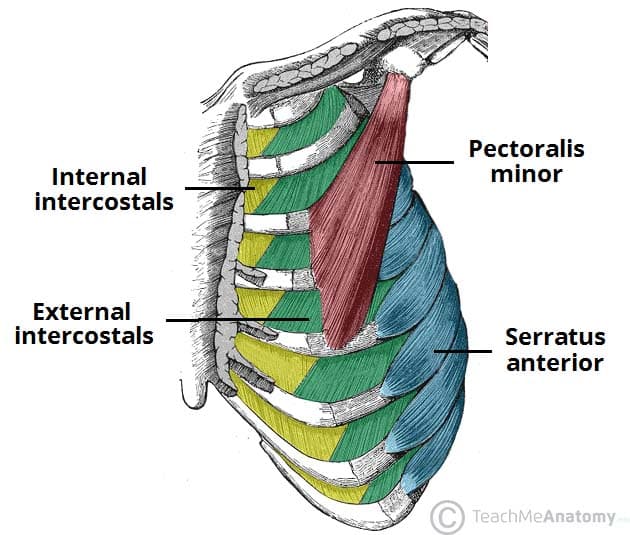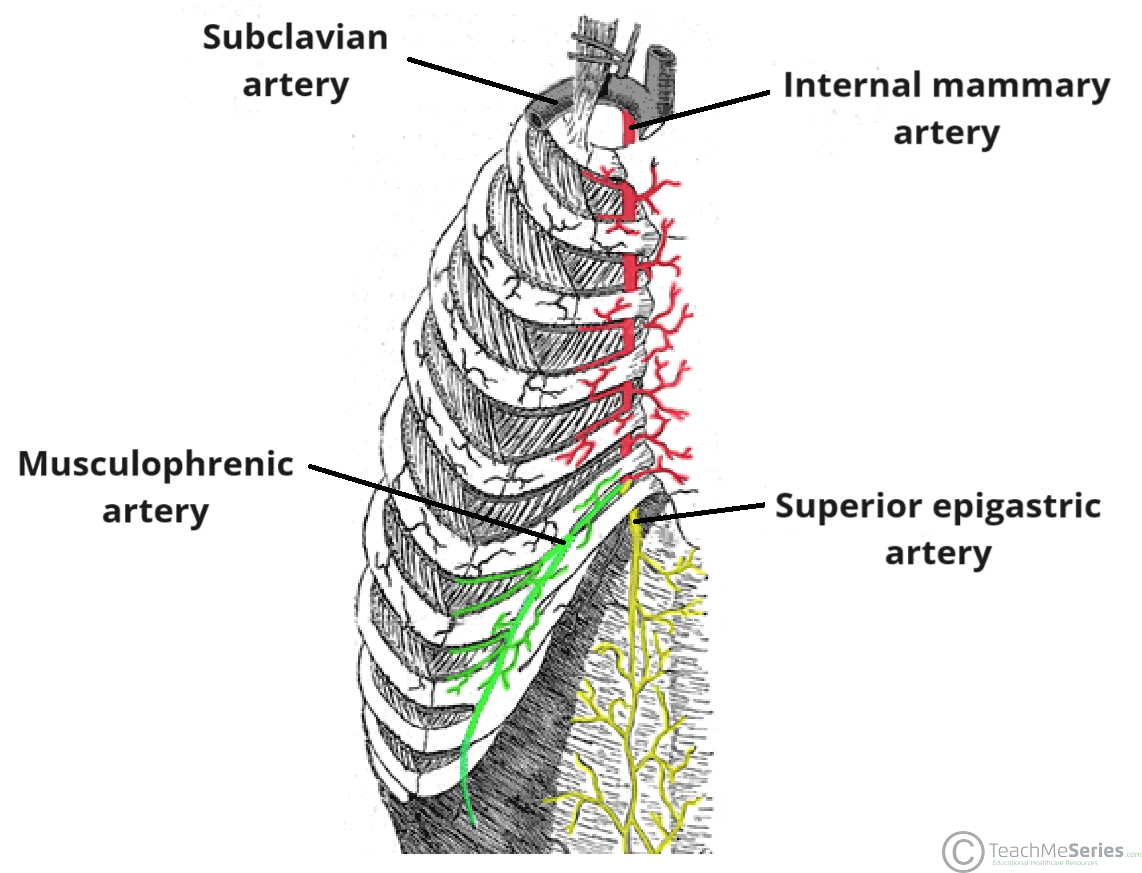The internal mammary artery (internal thoracic artery) is an artery of the anterior chest wall.
It supplies the skin and muscles of the anterior thoracic cage, the breast, and the superior aspect of the abdominal wall.
Course
The internal mammary artery arises from the proximal portion of the subclavian artery. It then travels inferiorly along the inner surface of the anterior chest wall – approximately 2cm lateral to the sternal margin.
The vessel descends in a neurovascular plane between the internal intercostal muscles and costal cartilages anteriorly, and the transversus thoracis muscle posteriorly. At the level of the 1st rib, it is crossed anteriorly by the phrenic nerve.
Along its course, the internal mammary artery gives rise to several branches:
- Anterior intercostal arteries
- Pericardiophrenic artery
- Perforating cutaneous branches
Once the internal mammary artery reaches the 6th to 7th costal cartilage, it bifurcates into its terminal branches – superior epigastric artery and musculophrenic artery.
Supply
The internal mammary artery contributes to the blood supply of the following structures:
- Anterior thoracic wall (sternum, ribs, costal cartilage and intercostal muscles)
- Pectoral muscles, subcutaneous tissue and skin over the anterior chest
- Breasts
- Via the pericardiophrenic artery – thymus, phrenic nerves, pericardium and diaphragm

Fig 2 – The internal mammary artery contributes to the blood supply of the structures of the anterior chest wall.
